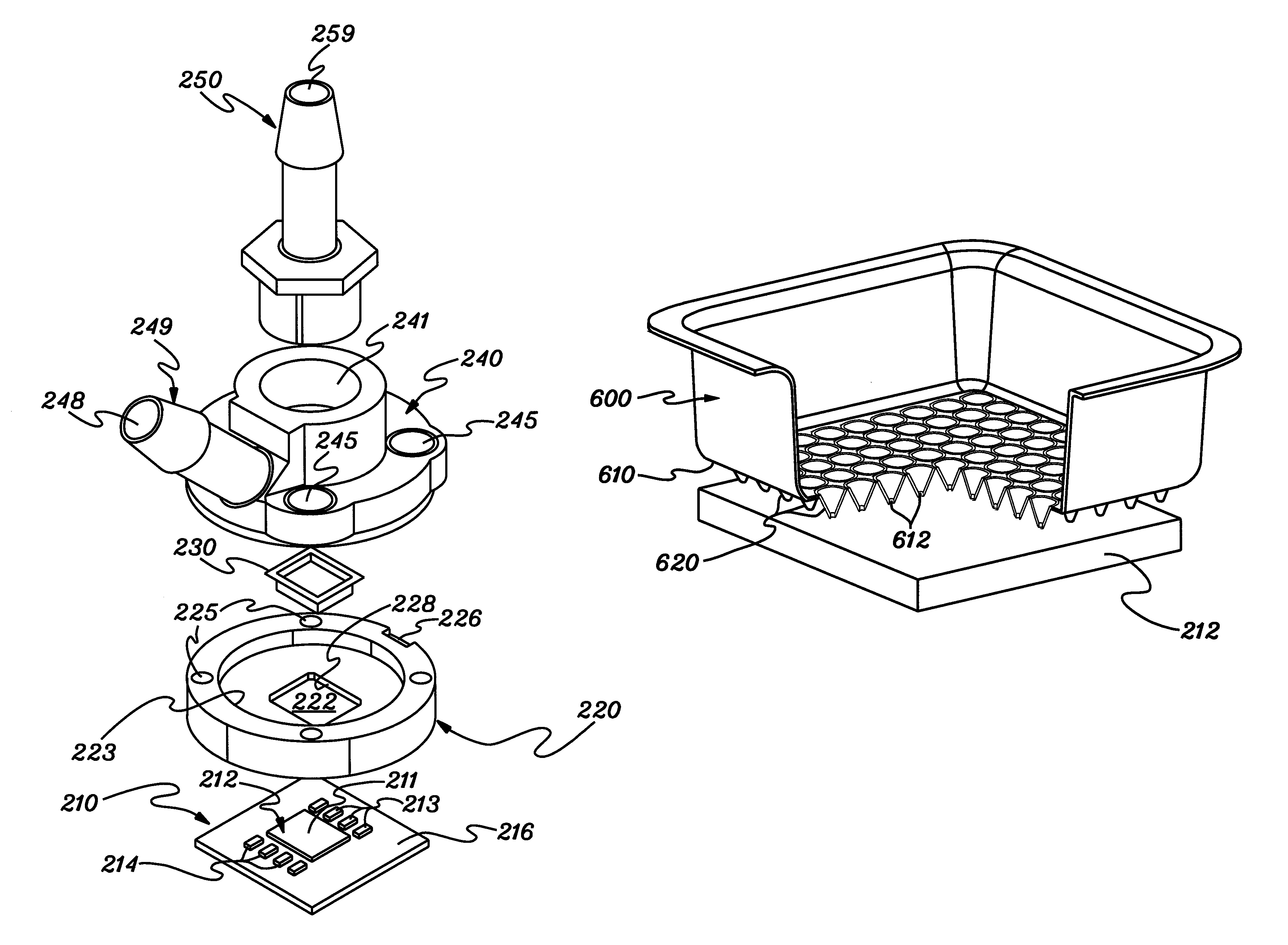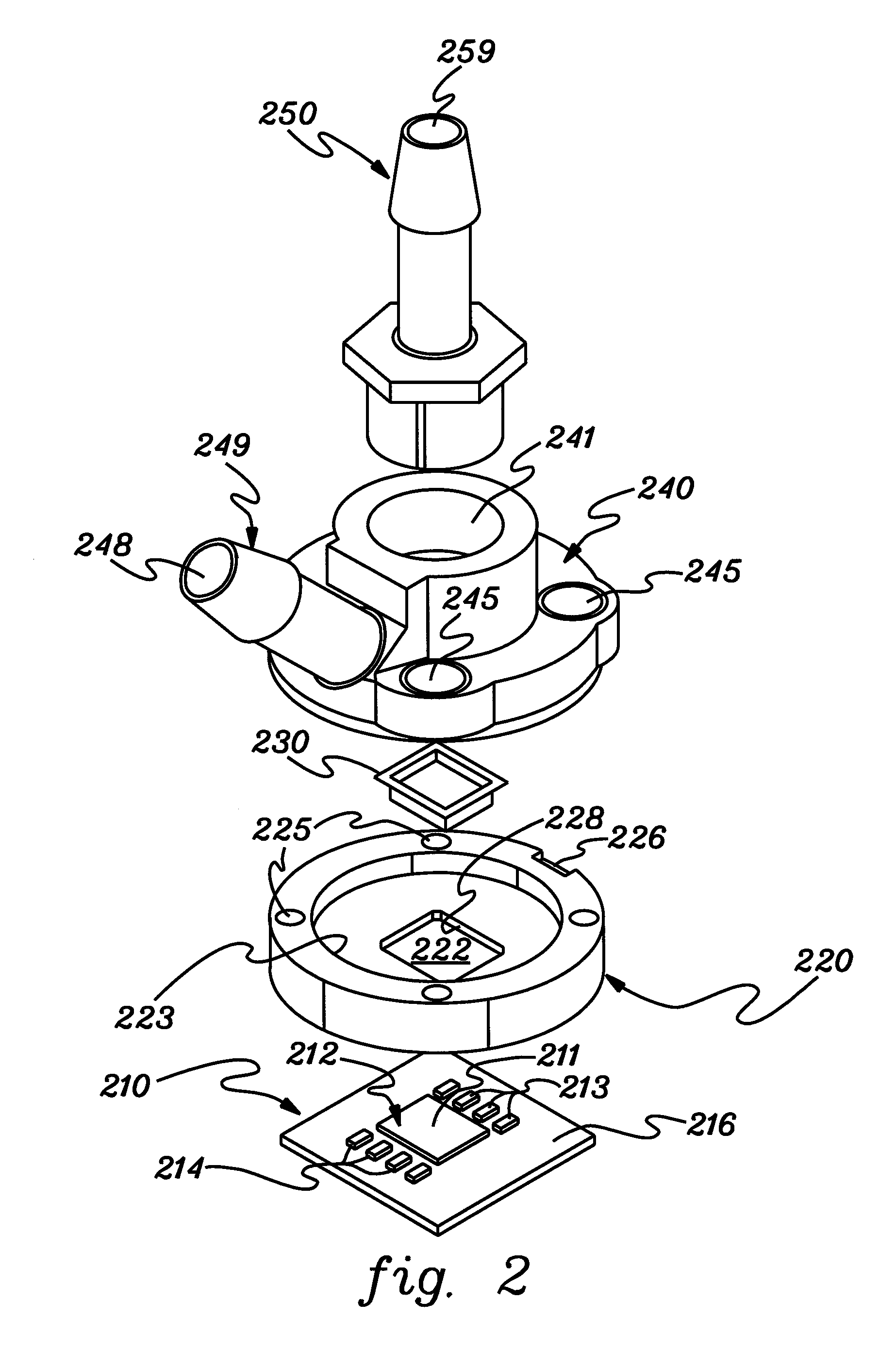Jet orifice plate with projecting jet orifice structures for direct impingement cooling apparatus
a technology of direct impingement and jet orifice plate, which is applied in the direction of cooling/ventilation/heating modification, lighting and heating apparatus, semiconductor devices, etc., can solve the problems of high heat load, electronic and mechanical failures that will affect the overall system performance, and device performance challenges, so as to facilitate the removal of coolant effluent and reduce the pressure drop across the jet orifice plate
- Summary
- Abstract
- Description
- Claims
- Application Information
AI Technical Summary
Benefits of technology
Problems solved by technology
Method used
Image
Examples
Embodiment Construction
[0025]As used herein “electronic component” comprises any heat generating electronic component of a computer system or other electronic system requiring cooling. In one example, the electronic component is or includes an integrated circuit chip, a semiconductor chip and / or any other electronic device requiring cooling. The term “cooled electronic module” includes any electronic module with direct or indirect cooling of an electronic component, with cooled single-chip modules and cooled multi-chip modules being examples of cooled electronic modules as described herein. In one embodiment, the cooled electronic module employs direct coolant impingement on the surface to be cooled, and is referred to herein as a “direct impingement cooling module”. The “surface to be cooled” refers to a surface of the electronic component itself, or to an exposed surface of a thermal cap, thermal spreader, passivation layer, or other surface in contact with the electronic component, and through which he...
PUM
 Login to View More
Login to View More Abstract
Description
Claims
Application Information
 Login to View More
Login to View More - R&D
- Intellectual Property
- Life Sciences
- Materials
- Tech Scout
- Unparalleled Data Quality
- Higher Quality Content
- 60% Fewer Hallucinations
Browse by: Latest US Patents, China's latest patents, Technical Efficacy Thesaurus, Application Domain, Technology Topic, Popular Technical Reports.
© 2025 PatSnap. All rights reserved.Legal|Privacy policy|Modern Slavery Act Transparency Statement|Sitemap|About US| Contact US: help@patsnap.com



